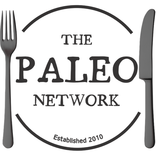Author: Kevin Bees (whole 30 sceptic-turned convert)
OK, a Marathon run (42.2km / 26.1m) is not very ‘Paleo’. But, let’s play for a while to find out how ‘Paleo’ eating could impact a distance runner and ask the question:
What would happen if you mixed the Paleo diet, 28 degree heat, with a Whole 30 sceptic-turned-convert into the Sydney Marathon?
I did just that… and the results are in, and have been counted and verified… and you want to hear this, especially if you are non-Paleo runner (or any non-Paleo athlete for that matter).

Pre-run preparation:
- Training– my training was actually not exemplary.
- Between 21 May and 14 August I did not run.
- Between 14 August and the 18 September Marathon, I squeezed in six runs only.
- In this time, and before I started the Paleo diet, I had to drop out of a training run at 22km due to lack of energy.
- Two weeks later and fuelled by the Whole 30 Paleo diet (and some simple and powerful NLP techniques), I accidentally ran a whole marathon when aiming at 30km. (I don’t run with a watch or Satellite Navigation, and I have never made that mistake before – since my reducing energy would prompt me to stop… which in this instance it didn't!)
- Fuel – Whole 30 Paleo for the four weeks prior to the Marathon. Therefore pre-race pasta feast – gone. This was substituted for the much tastier and enjoyable Chicken, Sweet potato and pumpkin… which I incidentally had for breakfast too the next day. (My only Paleo cheat in this process is GU gels whilst running).
The BIG day:
Arriving at the race with a face full of banana, I meet my Non-Paleo running partner.
I thought it would be a good idea to join this running partner since she is younger, fitter and well trained. Her personal best is 3H 44Min and mine is 3H 47Min – so, hopefully some inspiration to knock a few minutes off of my best time. (Plus she has a very nice bottom, so it would be a pleasure to run a few steps off of her pace!)
The Start
Bang… the gun goes and we push across the start line to the tune EVERYDAY I'M SHUFFLING (and my slightly amended lyrics):
Paleo-Grok is in the house tonight,
Everybody just run a good-time
So fit you gonna keep your mind
Everybody just run a good time.
And we’re off. For the first 10km we settle into a comfortable pace. Only, I am noticing that I am going a little faster than my pace setting friend… and she is getting to check out my butt instead. Lucky girl.
At this point, I have no idea if I am faster or slower than hoped (still no watch), but I just keep running at the pace that feels comfortable. Only another 2km and I fully settle into my faster stride and my friend and I run our own races.
It wasn't until the finish line at 42km that I actually realised what had happened. I thought my friend was having an off day and going slower than we expected, but in actual fact, I was faster than I could have even dreamed.
I smashed my personal best by 13 minutes.
In the heat.
With very poor training.
That’s 13 minutes off of my personal best.
‘Chuffed’ doesn't quite cover it – especially when I understand the story of the post run statistics:

- Energy consistency
- My 1st, 2nd & 3rd 10km were all 50 minutes (give or take a few seconds). Over this distance you would expect a degradation of performance… impressive since I had no pacemaker… just my own feeling of energy.
- My 4th set of 10km was also very close to the 50 minute mark and probably would have been equally consistent except for the two convenience stops.
- Comparative performance improvement
My rank Vs other runners in the race at each set of 10km went:
- 1,027
- 596
- 383
- 369
And the last 2.2km – arguably the hardest:
- 57
Put another way – in the hardest 2.2km, I was in the top 1.5% of all marathoners.
Do you think I might have got higher if I didn't stop and pose for these too??

The Paleo diet delivered me consistent energy to make this achievement a reality and left me with enough juice in the tank to finish very strong.
FINISHING STRONG
Watch my finish video here, I'm the fast one!
The best part about this is that I know there is more to come.
30 days of Paleo, poor training, and I smash a personal best.
What if I combine this new fuel source with a training program that is greater than six runs!?
With a Paleo diet, you too can see, hear and feel your goals coming to you faster too, can you not?
Give it a go… NLPaleo Boy say so!























